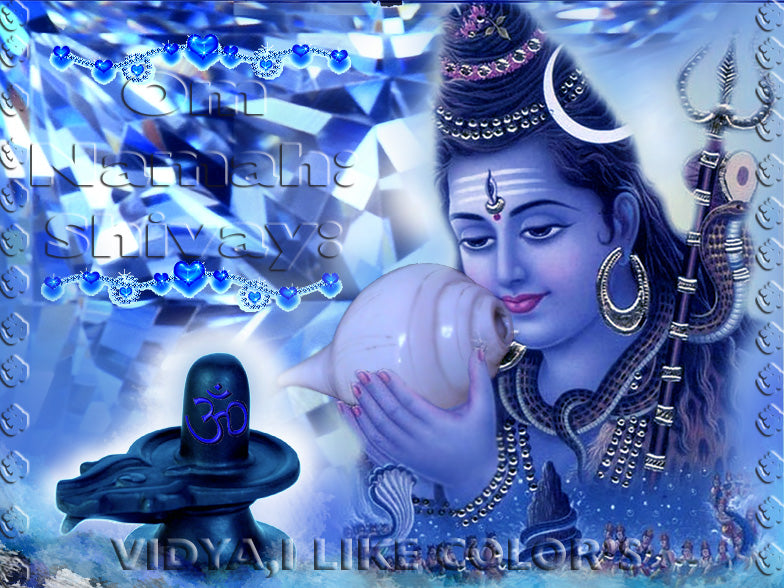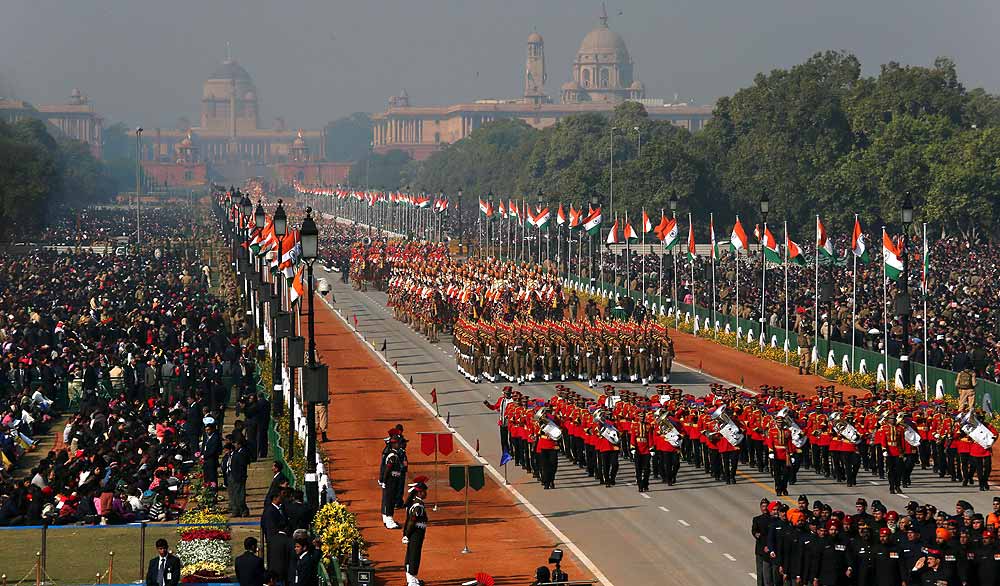
Seek the Lord Shiva’s blessings on Mahashivaratri
Feb.17th 2015 is one of the 12 Masik Shivaratis and also the most important one of the lot. Hence it is known as MahaShivaratri. Falling on a Tuesday this time, it is considered all the more auspicious and beneficial to Shiv Bhaktas or devotees of the Lord. Celebrated as the birthday of Lord Shiva, the benefits on observing the fast throughout this day and chanting Lord Shiva’s name brings the Lord’s blessings into a person’s life manifold this time is what is believed.
MANTRAS:
There are four principal chants and verses that are popular.
[/vc_column_text][/vc_column][/vc_row][vc_row][vc_column width="1/2"][vc_column_text]
- 1.Beej Mantra for Lord Shiva Panchakshari Mantra
ॐ नमः शिवाय[/vc_column_text][/vc_column][vc_column width="1/2"][vc_column_text]
- 2.The Maha-Mrityunjaya mantra
ॐ त्र्यम्बकं यजामहे सुगन्धिं पुष्टिवर्धनम् ।
उर्वारुकमिव बन्धनान् मृत्योर्मुक्षीय मा ∫ मृतात् ।।[/vc_column_text][/vc_column][/vc_row][vc_row][vc_column width="1/2"][vc_column_text]
- 3.Dwadasa Jyotirlinga stotra
द्वादश ज्योतिर्लिंग स्तोत्र
सौराष्ट्रे सोमनाथं च, श्रीशैले मल्लिकार्जुनम् ।
उज्जयिन्यां महाकालं ॐ कारममलेश्वरम् ॥
परल्यां वैधनाथ च, डाकिन्यां भीमशंकरम् ।
सेतुबन्धे तु रामेशं, नागेशं दारुकावने ॥
वाराणस्यां तु विश्वेशं, त्र्यंबकं गौतमीतटे ।
हिमालये तु केदारं, धुश्मेशं च शिवालये ॥
ऐतानि ज्योतिर्लिंगानि, सायंप्रात: पठेन्नर ।
सप्तजन्मकृतं पापं स्मरणेन विनश्यति ॥
[/vc_column_text][/vc_column][vc_column width="1/2"][vc_column_text]
- 4.Shiva Vandana
ॐ वन्दे देव उमापतिं सुरगुरुं, वन्दे जगत्कारणम् l
वन्दे पन्नगभूषणं मृगधरं, वन्दे पशूनां पतिम् ll
वन्दे सूर्य शशांक वह्नि नयनं, वन्दे मुकुन्दप्रियम् l
वन्दे भक्त जनाश्रयं च वरदं, वन्दे शिवंशंकरम् ll[/vc_column_text][/vc_column][/vc_row][vc_row][vc_column][vc_column_text]
Symbols of Lord Shiva and their meanings
We are familiar with the things about Lord Shiva in images that we see of him. What many would not be aware of is the meaning and significance of each of them. We stand to gain if we also follow the meaning that each conveys.
-
1.The third eye of Shiva

Known as the Teesri Aankh on the Lord’s face, the third eye on the forehead is symbolic of the inner perception. The two eyes are just sensory organs that show us the world as what is before it for day to day existence or survival. The third eye is the inner eye or the awakening of a new perception that shows us the reality of what we are shown by the two eyes. It means that the illusory world or Maya as seen by the two eyes, is perceived differently when our inner vision is awakened or like a third eye that has opened.
Learning – We have our eyes and ears open to take in as much as possible of what we see, inquire and receive through our penetrating questions. If we reflect with conscious effort deeply on every aspect of our inputs, our inner perception or vision would open up our minds to greater horizons and superior wisdom.
-
 2.Nandi the bull (his vehicle)
2.Nandi the bull (his vehicle)
Nandi is the bull (the Lord’s vehicle) to take him wherever he goes. Nandi is shown as sitting relaxed and awaiting the Lord. In fact he is merely meditating, a quality attributed to active listening to the Maker, taking in whatever he receives, alertly and with full consciousness of what is being said. There is no hurry in the wait, just a calm repose, with the mind fully absorbing of what it keeps receiving continuously. A silent communication with Lord Shiva!
Learning – Unhurried and relaxed meditation would bring in new thoughts of purity and wisdom that would establish a closer communion with God and his message of life to us.
- 3.The trishul (trident) of Lord Shiva
The trident represents the three fundamental aspects of life, called Ida, Pingala and Sushumna.Known as the three basic ‘Nadis’,  the left, right and central ones in the Pranayama Kosha or the energy centres of the human system, from which further 72000 Nadis or channels of Prana spring forth.
the left, right and central ones in the Pranayama Kosha or the energy centres of the human system, from which further 72000 Nadis or channels of Prana spring forth.
Pingala and Ida are supposed to represent the Shiva and Shakti aspects of nature, not the male or female beings but qualities of character attributed to humans perceived as belonging primarily to male and female. This would also be seen as the logical and intuitive aspects of a being. The balance of the Ida and Pingala in a person’s life determines the level of success he or she attains in dealing with life and most humans are restricted to the Ida and Pingala aspects alone in their lifetimes. However Sushumna is the inner balance that a being attains to be indifferent to any degree of change in life situations and remains independent of them.
Learning - The man whose sushumna or inner perception is awakened, is mentally much beyond his other fellow men in all aspects of life, dealing with it successfully and providing answers to others as well.
-
 4.The Moon on his matted locks
4.The Moon on his matted locks
Lord Shiva is also known as Somasundara, meaning moon or the intoxicated one. The Lord is ever intoxicated as he is the greatest yogi, a mind fully alert that enjoys to the full extent the inebriated state it is in,and needs no external stimulus to bring the mind to this state – of peace, pleasure and utter joy. This is the state of ‘Ananda’ or ‘utter bliss’, that a certain way of life can bring about – ever intoxicated and enjoying it fully at all times.
Learning – Intoxication can be had from within oneself and the body needs no external experiences to achieve it. It is far superior and only requires awareness and acknowledging the fact, living a pure life and enjoying it to the fullest satisfaction.
- 5.The Snake slung around his neck
A snake represents poison. It is by nature sensitive to certain vibrations. There are supposed to be 114 chakras in the human body of which seven are fundamental. Chakras are energy centres that when individually awakened or activated, the full potential of the aspect the chakra represents is realized. The vishuddhi chakra is at the pit of the throat. The Vishuddhi chakra represents the filter of poison from entering the body not merely by ingestion of food and drink but by bad thoughts, words, emotions and other poisonous forms that could enter the body and harm it. It symbolizes that if activated the vishuddhi would prevent human life from being poisoned by these external influences and remain pure and unharmed.
of poison from entering the body not merely by ingestion of food and drink but by bad thoughts, words, emotions and other poisonous forms that could enter the body and harm it. It symbolizes that if activated the vishuddhi would prevent human life from being poisoned by these external influences and remain pure and unharmed.
Lord Shiva has blue colour at the base of his throat, from the poison that he drank to save the Gods and asuras(demons) from the poison that got churned up out of the sea in their efforts in getting to the Nectar at the bottom of it. Symbolically this shows Lord Shiva as one who cares for anybody and everybody and does not hesitate to save others from the poisonous air of bad feelings and ill-will, while living in their midst.
Learning – Life is full of poison if one gets into bad ways. Arm yourself with knowledge, become aware and filter out life’s situations akin to poisons that could in various forms threaten to affect your life adversely.
[/vc_column_text][/vc_column][/vc_row][vc_row][vc_column][vc_column_text][youtube http://www.youtube.com/watch?v=4IIZGJqXH7g?wmode=transparent&w=640&h=360][/vc_column_text][vc_column_text]
Mahashivaratri is an auspicious moment in our lives when we can scourge our poisons accumulated over the years in our minds by a little fasting and chanting the simple hymn ‘Om Namah Shivaya’ throughout the day, and emerging as cleaner souls, closer to salvation at the end of it.
[/vc_column_text][/vc_column][/vc_row]


















































